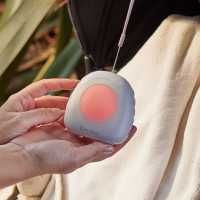Australian researchers discover major breakthrough in understanding the mysteries of stillbirth.
“It certainly is the most exciting project I’ve been involved in so far, with the potential to influence people’s lives around the planet,” Professor Roger Smith AM said.
Professor Smith’s team at the Hunter Medical Research Institute (HMRI) has found that many stillbirths are triggered by a deteriorating placenta, reports ABC NEWS.
“As you look around at everybody you know, you’ll notice that different people age at different rates,” he said.
“And it’s almost certainly the same with the placenta. Some placentas age more rapidly than others.”
According to ABC NEWS, Professor Smith believes some placentas begin to age weeks before the mother’s due date, slowly starving the foetus of the nutrients and oxygen it needs to survive.
“If the placenta is not working, the levels of oxygen fall in the baby, and if they get low enough, the baby will die,” Professor Smith said.
“It’s possible that we’ll be able to develop diagnostic tests to pick up in the mother’s blood the signs of ageing of the placenta, and therefore predict this devastating event, so that the obstetricians can perform a caesarean section and get the baby out before the baby dies,” he said.
Professor Smith’s immediate priority is reducing the number of stillbirths in Australia.
“I think it’s really important for mums of stillborn babies to understand that it’s not their fault,” he said.
“This is something that’s happened to the placenta, they had very little or no control over it.
“There was nothing they could do to prevent it. So they shouldn’t feel guilt about it.”
His research will be published in the American Journal of Obstetrics and Gynaecology this November. Read more on ABC NEWS here
Baby growth also a sign
Melbourne researchers also found a warning sign that may indicate a baby’s life is at risk in late pregnancy.
Mercy Hospital for Women found normal-sized babies who had a significant slowdown in growth in the third trimester are likely suffering from a poorly functioning placenta — a major risk factor for stillbirth.
It’s hoped that by identifying babies at risk, and monitoring them closely, more lives could be saved.
Lead author, obstetrician and gynaecologist Dr Teresa MacDonald said weight was used as a measure of how well the placenta was delivering oxygen and nutrients to the baby. “Babies who are underweight for their gestational age face a higher risk of stillbirth and are closely monitored during pregnancy, and delivery can be brought forward.”
“But babies that are small only account for half of all stillbirths — the other half occur in babies who are classed as a normal size,” Dr MacDonald said.
Her research at Mercy Perinatal and University of Melbourne followed 347 first-time mothers who had ultrasounds at 28 and 36 weeks to track the baby’s weight and growth. Read more here.
Sadly one in 100 pregnancies in Australia will end with the death of the baby. Six babies are stillborn every day.
Read more – How your babies movements inutero could be a sign of stillbirth risks
If you are struggling with a recent loss there are a few support networks to reach out to below
The Pink Elephants
https://pinkelephantssupport.com/feel-home/support-resources/
Bears Of Hope Pregnancy & Infant Loss Support
Grief Support: 1300 11 HOPE
Email: support@bearsofhope.org.au
PANDA
PANDA National Helpline (Mon to Fri, 9am – 7.30pm AEST) Call 1300 726 306
Sands.org.au
24 hours a day, 365 days a year (including Christmas Day) by dialling 1300 072 637
Lifeline 13 11 14
Share your comments below
Getty photo
We may get commissions for purchases made using links in this post. Learn more.




















10:24 am
11:16 pm
9:06 pm
8:39 pm
8:04 pm
7:39 pm
11:13 pm
3:54 pm
11:38 am
10:58 pm
4:27 am
4:34 pm
11:55 pm
6:39 pm
7:41 am
- 1
- 2
- »
Post a comment